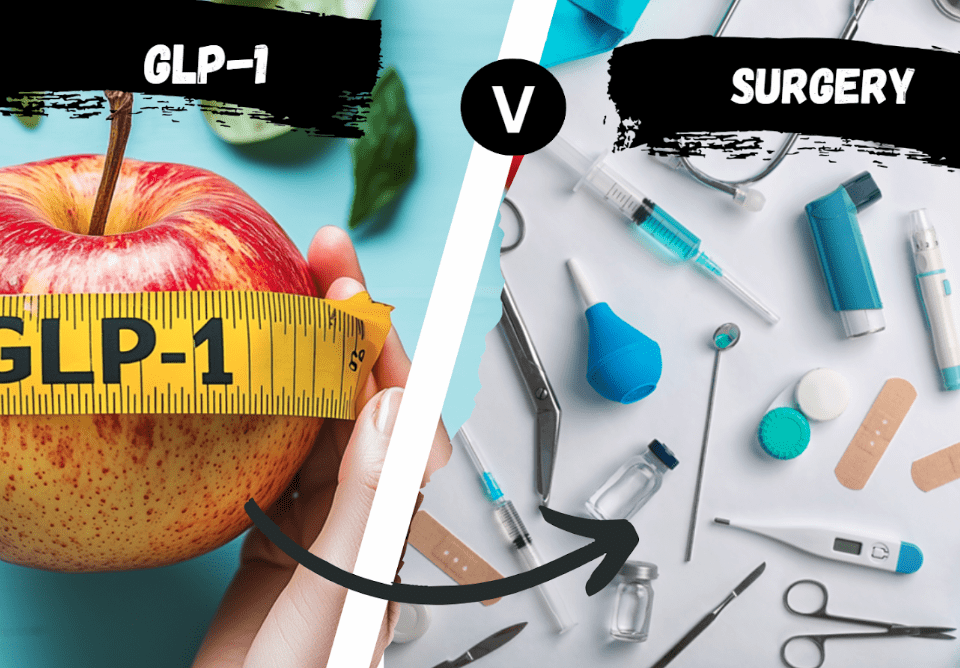
The blockbuster drug Wegovy, recently approved in Australia by the TGA, is likely to be a weight game-changer. Already for months, there have been supply shortages globally and it’s a similar story here for Ozempic – in Australia since 2020. Both drugs are injectable versions of the GLP-1 receptor agonist Semaglutide.
The problem for prescribing GPs is that with Ozempic recently returning this year in very limited supply and the TGA urging doctors to prescribe Ozempic ONLY for patients with Type 2 diabetes, this advice is becoming very difficult to follow. Most doctors would be judicious in these times of short supply, about prescribing Ozempic to a woman who wants to shed a few kilos of menopausal or baby weight. But what about the obese patient who may not have Type 2 diabetes but is about to undergo bariatric surgery which becomes considerably riskier without significant weight loss before the procedure?
Increasingly, doctors are also facing pressure from obese patients who claim they are being stigmatised, vilified or being called “selfish” in asking for a prescription.
Why should obesity be any less valid to treat than diabetes they ask?
On the other hand, disheartened diabetes patients remain at risk of worsened glycaemic control and new complications if they do not receive Ozempic.
As doctors, we need to work together on the issue until this shortage is resolved, and in the meantime, I would like to share my knowledge of prescribing these drugs and surgical options for GPs.
Choosing between Medication and Surgery [GP Q&A]

1. What is the difference between Semaglutide (Ozempic, Wegovy) and Liraglutide?
- Semaglutide (Ozempic) is a weekly subcutaneous injectable treatment approved only for Type 2 diabetes, but is currently being used off-label for obesity.
- Wegovy is a higher weekly dose of Semaglutide recently approved in Australia by the TGA for weight loss and hoped to arrive soon.
- Liraglutide (Saxenda) is a daily injection.
2. What is the dosing frequency?
- Wegovy is weekly with a starting dose is 0.25mg, increasing for four weeks until 2.4mg is reached.
- Ozempic is weekly with starting dose of 0.25g up to 1 mg weekly.
Most patients report good appetite suppression at 0.50 to 0.75mg weekly.
Liraglutide is a daily injection starting at 0.6mg or one week, 1.2mg daily for the second week and 1.8mg daily beyond that. It is not advised to go beyond these levels as nausea, constipation or diarrhoea are higher in the upper limit of 3mg.
3. How effective is Semaglutide?
The potency of Semaglutide was confirmed in 2021 in The New England Journal of Medicine which found Wegovy resulted in 14.9% weight loss compared to 2.4% placebo in 1961 subjects, over 68 weeks. A third of Semaglutide group patients lost 20% of weight. Furthermore, 84% of patients with pre-diabetes returned to normoglycemia, compared with 47.8% in placebo. Weight circumference in the Semaglutide group was -13.4cm, compared with -2.4cm in the placebo.
4. What about the downsides?
There was a higher risk of pancreatic inflammation in the Semaglutide group (2% vs 1.2% placebo for gallstones) however all recovered. There was no difference between benign and malignant neoplasms and one death in each group.
Serious side effects were mostly gastrointestinal (9.8% in the control group v 6.4% in the placebo). Common side effects included diarrhoea and nausea.
It’s also clear that once stopping these medications most patients will regain most of their weight again. However, they may be very useful adjuncts to surgery, or used alone for weight maintenance Class I obesity patients.
5. What should I do if I cannot prescribe Semaglutide for my obese patients?
Pharmacotherapy alternatives such as Liraglutide were shown to have 6.4% effectiveness v 15% Semaglutide in one JAMA study. Contraindications include medullary thyroid cancer and multiple endocrine neoplasia 2 (the same for Wegovy and Ozempic).
Semaglutide is a daily v a weekly injection and is generally well tolerated with starting side effects of nausea, constipation and diarrhoea that often resolve.
Medications should be used much more sparingly.
- Phenteramine – is tolerable short-term but causes frequent dry mouth, palpitations, hypertension and insomnia. Some patients report that by varying the dose and missing a couple of days they have experienced better results, due to drug tolerance issues. Many patients use 15mg on alternate days or 30mg on weekdays only.
- Topiramate is traditionally used for migraines and tension headaches but also suppresses appetite. It can be used 25-50mg daily, or twice daily. Side effects include mood swings, blurred vision and suicidal thoughts.
- Combination naltrexone and bupropion – this targets brain appetite but is linked to hypertension and seizures, constipation and suicidal thoughts.
Diet drugs have a checkered past
- Fen-Phen in the 90s was taken off the market after reports of heart valve damage.
- Reductil was taken off the market in 2010 due to cardiovascular side effects.
- Rimonabant was removed shortly afterwards due to increased risks of suicide ideation.
Since then, very few drugs have made it to market without extremely rigorous safety testing
There is no miracle pill as we have seen from medicine’s past history. Following these failures and significant and increased regulatory hurdles and rigorous testing, Wegovy is the first slimming prescription drug to gain FDA and TGA approval in many years.

How successful is medication vs surgery?
If we focus on the NEJM Semaglutide study, a third of Semaglutide group patients lost 20% of weight, which is approaching the efficacy of sleeve surgery, and there will be much development in this space. While the majority of surgical patients will succeed, about 15-35% do not reach their goal weight loss, according to a 2020 BMC Endocrine Disorders Journal that followed 130 patients a year after surgery.
The type of surgery and patient selection matters too.
One New York study in the Journal for Surgery and Obesity Related Diseases of more than 40,994 bariatric surgery patients followed for 10 years, found that laparoscopic adjustable gastric banding had a 26% revision rate, and Gastric Sleeve had about 9.8%. Another 2021 study on 150 patients compared Laparoscopic Gastric Sleeve (LGS) and Laparoscopic Adjustable Gastric Band (LAGB) and found that whilst the sleeve achieved greater weight loss at the 1 and 5-year mark, by the 10-year mark the weight loss was equal.
At Winnett Specialist Group we perform all of these surgeries and pride ourselves on the “right surgery for the right patient” as well as rigorous assessment and follow-up with a surgeon, dietitian and exercise consultant
*Mr Jason Winnett is not involved in financial arrangements with any clinical trials or other financial arrangements with pharmaceutical companies.



